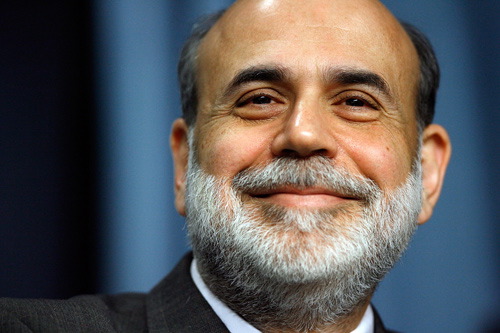
It’s always tricky when the past holder in a major office — say, a former U.S. president — gets interviewed. You can’t second-guess your successor, nor can you offer fluffy non-answers to pointed questions.
Ben Bernanke, the recent former head of the U.S. Federal Reserve, found himself on the hot seat recently, answering very pointed questions about the U.S. interest rate. Interestingly, his answers make the case for prudent, low-cost portfolio investing.
Interest rates matter a lot. Young folks care about credit card rates and car loans, while those nearing retirement are more concerned with livable, safe incomes.
The interest rate calls the tune in both cases. As rates rise, revolving debt becomes more costly. However, that also means better-paying bonds and higher interest on bank deposits.
In the interview, Bernanke admitted flat out that he never expected rates to stay so low for so long. It has been at virtually zero since 2009 (technically, at 0.25%, compared to an average since 1971 of nearly 6%).
But Bernanke also pointed out that the long-held policy — which ended this past Wednesday when the Federal Reserve announced a rate hike to 0.5% — has worked. Massive Fed borrowing, so-called quantitative easing (QE), has allowed the U.S. economy room to recover and heal.
“In terms of the purported bad side effects of QE, critics will say it is not over until it’s over, but we can certainly say that to this point, concerns that critics have voiced including high inflation, commodity price spikes, collapse of the dollar, stock market bubbles, failure to recover, all those things that have been repeated over and over again, by a whole litany of critics, but not by professional economists for the most part, so far have failed to manifest,” Bernanke said.
“And if you look at the U.S. economy, both in terms of growth and inflation, we are considerably closer to target than any other major industrial economy and so the results thus far, given where we started, have been reasonably good.”
Many of our clients ask how a portfolio might be built to withstand rising interest rates. After all, the traditional 60/40 stock and bond approach can seem very high risk.
If interest rates rise, bonds fall in price. Likewise, investors could sell off stocks in a bid to catch rising bond rates.
Our approach has been to soften the potential impact of a decline in the bond market by owning a variety of income instruments, including dividend-paying stocks, foreign debt and corporate debt.
Capturing gains
By diversifying across the spectrum of income sources, a passive portfolio indexing model offsets the specific risks of a panic in any given sector. Meanwhile, rigorous rebalancing allows an investor to capture gains where and when they happen.
Bernanke’s point is well-taken: A lot of people, many of them in the media, painted a picture of imminent financial disaster due to Fed policies of the past several years. And they were utterly wrong. Many a speculator took a bath on that advice.
Bernanke and his successor at the Fed, Janet Yellen, have no particular ability to forecast the future. Yet they were able to deftly manage reality as it appeared. The passive portfolio investing approach works the same way. Own investments, lower your costs, manage risk as necessary and rebalance.
It sounds simplistic, I know, but the alternative, “all in” contrarian approach, is not investing. It’s betting.





